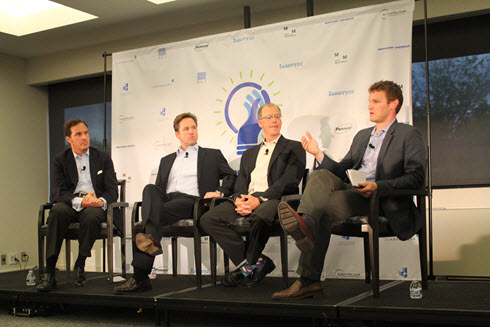The brilliant minds behind this year’s ASCE Innovation Contest winners are now trying to solve their biggest challenge – how to win over investors.
It’s a harsh reality, but having a brilliant breakthrough is only half the process. Maybe not even half. It’s an entirely different challenge to bring that idea to market.
Fortunately, the ASCE Innovation Contest can help. The contest serves to showcase promising ideas with the potential to help address the ASCE Grand Challenge to reduce infrastructure life-cycle costs.
At last week’s two-day celebration for winners of the second annual contest, a panel of high-level investors – Matt Garver of Liberty Street Capital, Matthew McGrath of Optimize Capital, Mark Riser of Morningside Private Investors, and Jed Freedlander of the Hunt Development Group – provided insights into how innovative ideas are marketed and what they look for when making investments.
What are the dos? The don’ts? Here are three key things to remember:
1. Stay Focused on the Dollar Sign
Mark Riser began his career in engineering before moving into finance, so he knows of which he speaks when he advises that civil engineers with innovative ideas concentrate on exactly how their innovative idea will generate revenue.
“I used to think about the stuff at the end of the numbers; now I focus on the stuff with the dollar sign at the beginning,” Riser said during the panel discussion. “You’ve got to be able to translate that stuff you’re passionate about and say, ‘This is what it means to the business….”
2. Keep It Quantifiable
This is something that likely lends itself to the civil engineer’s mindset – the business plan must be direct and measurable.
“[The innovator’s] plan to take their product or service to market needs to be very quantifiable,” McGrath said. “Obviously, there is a problem they’re solving [with their innovation], but their actual business plan or execution plan or implementation plan needs to have very quantifiable milestones and goals that they can deliver upon. And those have to be directly tied to the money that they’re looking to raise. … How are investors going to know that it was a success?”
Even given the importance of hard numbers, people still matter.
“First and foremost, it is the people that are behind the business or the concept …,” McGrath said. “The credibility of the management team is really what people invest in, especially at the earlier stages.”
Riser reiterated the point, citing his group’s penchant for often decade-long investments.
“We look at the management,” Riser said. “We’re going to be investing with these folks for a long, long period of time…. We’ll spend a lot of time with them and they will with us, making sure we are a good fit.”
Watch for details on the opening of the third Innovation Contest at its official site.


